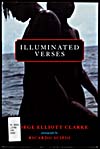George Elliott Clarke
On "This Part may be cited as the Canadian Charter of Rights and Freedoms."
The sentence's bland legalese is reassuring: it seems to drone, "nothing radical here." After 115 years into its existence as an imperially invented, pluralist nation-state, Canada -- this North American monarchy boasting a European Crown -- had suddenly, perhaps impetuously, chosen to define its liberties. Surprisingly though, despite the theoretical violence of this endeavor, there is no sign of nervousness, or of exhilaration, in the clear, dry sentence that is clause 34 of the Constitution Act, 1982: "This Part may be cited as the Canadian Charter of Rights and Freedoms."

Source
Such casual language is appropriate when one considers the difference between the Canadian Charter of Rights and Freedoms (and please note the nationalism implicit in the adjective) and its predecessors, French and American, despite the 1990 assertion of its prime mover, The Right Honourable Pierre Elliott Trudeau, that the Canadian document follows in "the grand tradition of the 1789 Declaration of the Rights of Man and the Citizen and the 1791 Bill of Rights of the United States of America." Indeed, our rights and freedoms are distinctly less abstract and more empirical than the French and U.S. varieties, for theirs were born of revolutionary élan and idealism. The authors of those universal declarations and rights catalogues came to their utterances fresh from either cannonading imperial masters or guillotining royal families: there is gunpowder in the air and blood on their hands. When they say, "We believe all men are created equal," they mean it; but they are also disingenuous: they really mean, "We believe all able-bodied, educated, and propertied white males are created equal." After all, their "democratic" societies still endorsed slavery (overseas for France; at home for the U.S.); and patriarchy and class hierarchies were realities as normal as mortality.
Cover of a book by George Elliott Clarke entitled Illuminated Verses, 2005
Nevertheless, no one can deny that the French and American documents of citizens' powers were conceived on battlefields and written in the fresh, acrid memory of immediate struggle against "tyrants" and their minions. Even the Haitian Revolution (though ignored by Trudeau and most Eurocentric political philosophers), that glorious and most successful of slave revolts, 1791-1804, generated, out of the misery and suffering of black thousands in ruction against the "Enlightened Despotism" of white imperialist and slave masters, a formidable poetry and theory of liberation. Hear also the formulations of Frantz Fanon, the Martiniquan-born fighter and philosopher for Algerian independence from France: "I find myself suddenly in the world and I recognize that I have one right alone: That of demanding human behavior from the other. One duty alone: That of not renouncing my freedom through my choices." Similar sage, emancipatory precepts may be gleaned from the Chinese, Cuban, Iranian, Nicaraguan, and Soviet revolutions.
Canada is once again, a different story. The framers of its constitutions (1867 and 1982) and the drafters of its liberties spill more ink than blood, fire more servants than they do guns. But the peace that spawns the Canadian declarations of rights and freedoms is, nevertheless, spurious. The gentlemen who named Canada a "Dominion" in 1867 did so with the threat of U.S. invasion from without, the possibility of Aboriginal, Métis, and Francophone rebellion within, and the dream of a "North-West Empire" (with a few, West Indian properties for good measure) to fulfill. The "First Ministers" who brought in the Charter of Rights and Freedoms in 1982 did so with the threat of Québec "separation" in the wings and with the reality of terrific Aboriginal and feminist mobilization in the streets. As usual, Canada likes to dub its revolutions "quiet," if not "polite," when, in truth, they never are, nor should be.
- Rosemary Brown (1930-2003), who became the first black woman member of any Canadian parliamentary body when she was elected to the British Columbia provincial legislature in 1972, September 25, 1990
Source - Design for a 1965 postage stamp commemorating the London Conference of 1866, depicting Fathers of Confederation who participated in drafting the British North America Act, 1867
Source - Page from a speech on Canadian rights and freedoms, delivered by Prime Minister Pierre Elliott Trudeau at the Federal-Provincial Conference on the Constitution, February 10, 1969
Source - Political cartoon by Leonard Norris, depicting a group of men working on new words for the Canadian national anthem, looking at the new flag for inspiration. The caption reads: "...what we're seeking, gentlemen, are words as brilliant, stirring and inspired as this wadjamacallit...," March 17, 1967
Source
Although our courts are paralytically conservative -- to defend property (despite the absence of such protection in the Constitution); although their rulings are often perniciously retrograde (especially vis-à-vis the unmentionable Canadian sin of racism); the Charter of Rights and Freedoms is potentially revolutionary in three ways: 1) recognition of multiculturalism (Section 27); 2) de facto recognition of the existence of mixed-race people (Section 25); and 3) protection of affirmative action programs (Section 15[2]). The formal statement of the potential enhancement of these characteristics of the Canadian State could launch new, sundry, "quiet" revolutions, if we so desired…. But that would require a radical, anti-racism agenda….
George Elliott Clarke is a revered poet and E.J. Pratt Professor of Canadian Literature at the University of Toronto.
Further Research
"George Elliott Clarke." Trudeau Foundation.
www.trudeaufoundation.ca/community.igloo?r0=community &r0;_script=/scripts/folder/view.script&r0;_pathinfo=/{3ebb02c1- 4f13-4da9-9ccb-60a9e360ab3c}/program/fellows&r0;_l=en &r0;_output=xml&r0;_ui=profile&r0;_id={2D8885EF- E9D3-4125-8195-CB355BF813CB}&r0;_year=2005 &r0;_status=current
(accessed October 24, 2006).






